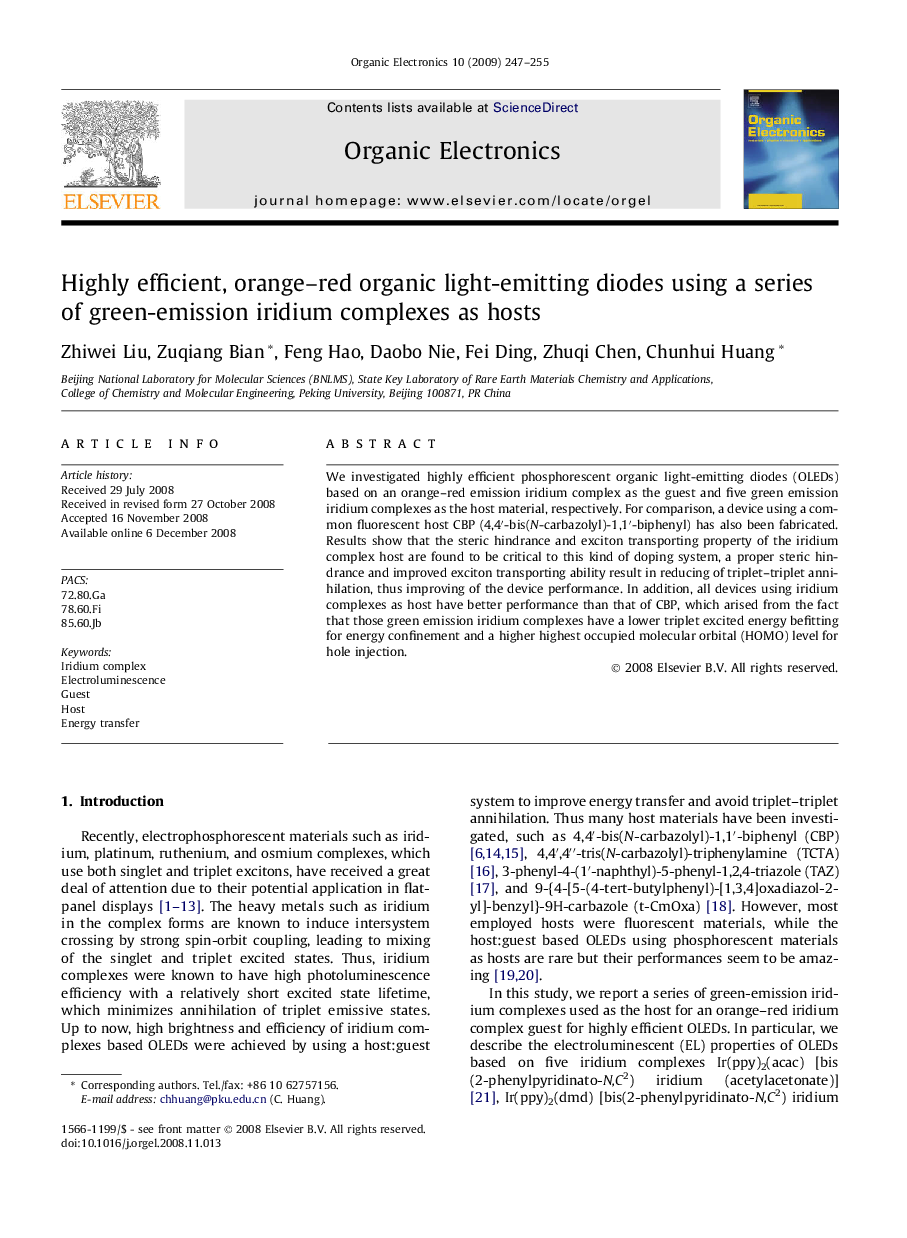| Article ID | Journal | Published Year | Pages | File Type |
|---|---|---|---|---|
| 1265183 | Organic Electronics | 2009 | 9 Pages |
We investigated highly efficient phosphorescent organic light-emitting diodes (OLEDs) based on an orange–red emission iridium complex as the guest and five green emission iridium complexes as the host material, respectively. For comparison, a device using a common fluorescent host CBP (4,4′-bis(N-carbazolyl)-1,1′-biphenyl) has also been fabricated. Results show that the steric hindrance and exciton transporting property of the iridium complex host are found to be critical to this kind of doping system, a proper steric hindrance and improved exciton transporting ability result in reducing of triplet–triplet annihilation, thus improving of the device performance. In addition, all devices using iridium complexes as host have better performance than that of CBP, which arised from the fact that those green emission iridium complexes have a lower triplet excited energy befitting for energy confinement and a higher highest occupied molecular orbital (HOMO) level for hole injection.
